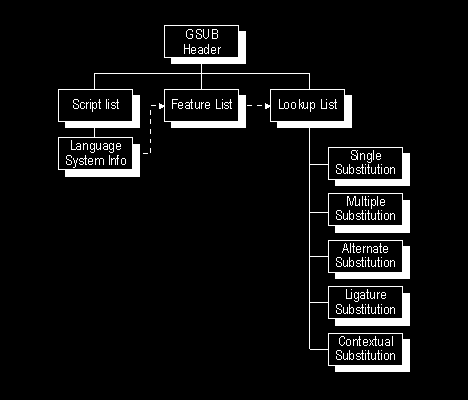

Value | Type | Description |
1 | Single | Replace one glyph with one glyph |
2 | Multiple | Replace one glyph with more than one glyph |
3 | Alternate | Replace one glyph with one of many glyphs |
4 | Ligature | Replace multiple glyphs with one glyph |
5 | Context | Replace one or more glyphs in context |
6+ | Reserved | For future use |